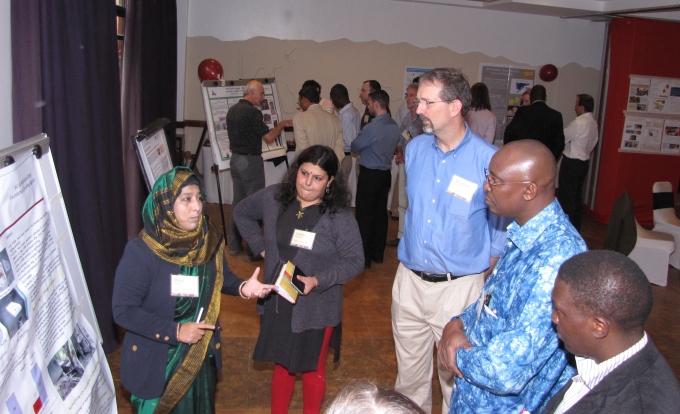The seven openings to events that we described in our last blog are a first step in 'bringing people’s voices and their different experiences into the room, in a spirit of curiosity and learning'. We used that phrasing when we first blogged about our Facilitation Practice last year to describe what happens as you move from openings to a logical next phase in gatherings: 'finding out what we know'. The Tagging and Human Spectrogram exercises we described in our last blog get people curious and interested, and lead naturally into richer conversations in which people find out about each other.
Presentations become engaging and energising when people are limited to a fixed time or number of slides, or by using a timer approach like Pecha Kucha. This also offers a compromise for those who value the security or ease of powerpoint. When there is a lot of detail to present, doing it this way allows for different approaches to communication and learning. For example, in a recent annual meeting of the CARIAA program, which involves four large, complex research syndicates in detailed and current climate change research, each syndicate gave a 10-minute introductory presentation very early in the three-day event. A bit like a TED talk, it meant that each of the senior scientists and their teams produced rich, engaging and dynamic communication that set the scene and sparked off a range of questions and follow-up conversations.
What shall we do about Presentations?
Presentations have a bad press among a lot of development people exhausted by the round of conferences and workshops and generally also among facilitators. The issue here is one of framing and organisation:"what if we re-imagine conferences and meetings as gatherings where people can connect, learn and have the conversations that really matter", was a blog response here to Duncan Green's rant about awful events. We described a simple but effective approach to sharing, a variant on speed-networking. Three-minute snapshot presentations from people of what was inspiring about their work meant that in less than an hour everyone knew the best of what was happening across a range of projects.Presentations become engaging and energising when people are limited to a fixed time or number of slides, or by using a timer approach like Pecha Kucha. This also offers a compromise for those who value the security or ease of powerpoint. When there is a lot of detail to present, doing it this way allows for different approaches to communication and learning. For example, in a recent annual meeting of the CARIAA program, which involves four large, complex research syndicates in detailed and current climate change research, each syndicate gave a 10-minute introductory presentation very early in the three-day event. A bit like a TED talk, it meant that each of the senior scientists and their teams produced rich, engaging and dynamic communication that set the scene and sparked off a range of questions and follow-up conversations.
Posters and Galleries
In both those events the presentations were followed by a ‘market place’, with posters and other information for more in-depth discussions. The Building Demand for Sanitation (BDS) program, on the other hand, started with the posters.- Prof. Bilqis Hoque talks about women leaders in local Government at a BDS convening The way it's organised and managed has evolved over the five years of the program, as is explained in our original post on the FacilitationAnywhere blog, where we also discuss other methods such as Speed Geeking and Carousels

